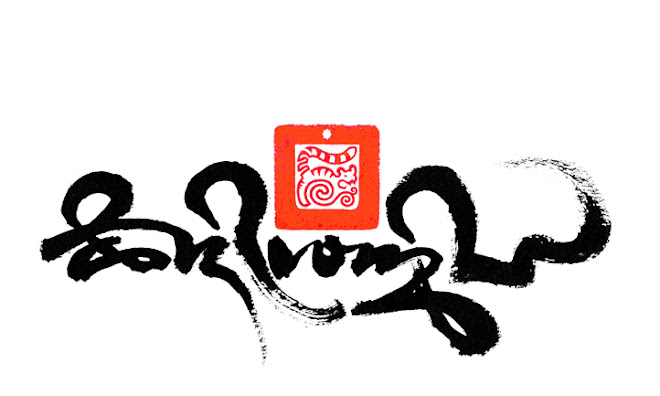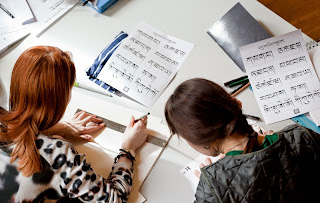Ziya Art Centre hosts its second Calligraphies in Conversation International Exhibition in multiple locations across Northern California between November 7th - December 12th 2015.
This year, over 70 artworks is curated out of over 250 submissions from local, national and international artists and calligraphers including Canada, Czech Republic, Egypt, France, Italy, India, Indonesia, Iran, Pakistan, Russia, Turkey, UK, and USA. A range of diverse traditions and scripts will be exhibited, with an array of Western, Chinese, Japanese, Tibetan, Arabic, Persian, Turkish, Hebrew, and Indian traditional calligraphy artworks as well as manifestations of calligraphy in some contemporary and abstract art pieces. The exhibition will host a wide assortment of medium including calligraphy with traditional tools, painting, pottery and ceramics, digital arts and 3D printing, mixed media, metal art and jewellery, collage, and installation.
This is the second occasion Tashi Mannox has been invited to exhibit at the Calligraphy in Conversation event - this time showing one of his more major art-pieces called the Five Coloured Hum.
The Five Coloured Hum -
The main character hum is colored relating to the five Buddha
families and their respective colours. This particular system is in accordance
to the teaching of Chogyam Trungpa. (on Hum: “an approach to Mantra” from the
collected works Vol 5)
1. bindu head ‘m’, red in colour, Buddha of
all accomplishing wisdom.
2. crescent moon, green in colour, Buddha of all encompassing wisdom.
3. ‘ha’ body, white in colour, Buddha of mirror-like wisdom.
4. small ‘a’, yellow in colour, wisdom Buddha of equality.
5. ‘u’ vowel, blue in colour, Buddha of discriminating wisdom.
2. crescent moon, green in colour, Buddha of all encompassing wisdom.
3. ‘ha’ body, white in colour, Buddha of mirror-like wisdom.
4. small ‘a’, yellow in colour, wisdom Buddha of equality.
5. ‘u’ vowel, blue in colour, Buddha of discriminating wisdom.
The Petsug text in Dutch gold leaf is
from another text on the Hum character called:
‘The prayer for the realisation of Hum’.
‘Although the enlightened awareness of
all the Buddhas of the three times without exception is innately pure,
spontaneously established, and beyond description, imagination or expression,
the unimpeded union of luminosity and utter lucidity within the Hum, within the
self-radiance of the five poisons, uninterrupted pristine cognizance.
Translation by Eric Tsiknopoulos
Here is the list of the venues:
- November 7th, 5 – 8 p.m. at ICCNC at 1433 Madison Street, Oakland CA 94612
Free opening reception ceremony with remarks, refreshments, and panel discussion and calligraphy demonstration by award winning international calligraphers including:
- Ronald Y. Nakasone: Master in East Asian literati tradition and a member of the Core Doctoral Faculty at the Graduate Theological Union (GTU)
- Arash Shirinbab: Award winning artist and Arabic-Persian calligrapher
- Amol Saraf: Award winning artist and tribal Indian calligrapher from India
- Leon Sun: Printmaker, photographer, painter, graphic designer, three-dimensional artist, writer, poet
- November 14th, 2 – 5 p.m. at Oakland Main Public Library at 125 14th St., Oakland, CA 94612
Free calligraphy demonstrations by award winning and renowned master calligraphers including:
- Rick Paulus: Former White House chief calligrapher
- Alan A. Blackman: Well-known calligrapher & lettering artist (Western scripts)
- Elizabeth Nisperos: Multidisciplinary calligrapher reviving the lost Baybayin script of Philippines
- Arash Shirinbab: Award winning artist and Arabic-Persian calligrapher
- November 21st, 2 – 5 p.m. at OACC at 388 Ninth St., #290, Oakland, CA 94607
Free special calligraphy silent auction with refreshments, curator’s talk, and calligraphy and art demos by local calligraphers and artists
- December 12th, 2 – 4 p.m. at ICCNC at 1433 Madison Street, Oakland CA 94612
Free closing reception and hands-on workshop: The art of Persian painting and Islamic geometric design in relation to calligraphy. By Maryam Vesal, local artist and maestro of Persian Miniature and Tazheeb.
هنرمند گرامی، با عرض سلام، در صورتی که نام شما در میان اسامی پذیرفته شدگان در نمایشگاه ما بود، مجددا به شما تبریک گفته و خواهشمندیم که حتما هماهنگ فرمایید و آثار را از طریق پست تا قبل از تاریخ 30 اکتبر به دبیرخانه ما برسانید. اطلاعات دبیرخانه:
Organization: ICCNC/ for Calligraphy Exhibition
Address: Street: 1433 Madison St.; City: Oakland; State: California; Postal Code: 94612
Contact Information: 510-283-4518 or ziya.art.studio@gmail.com








































